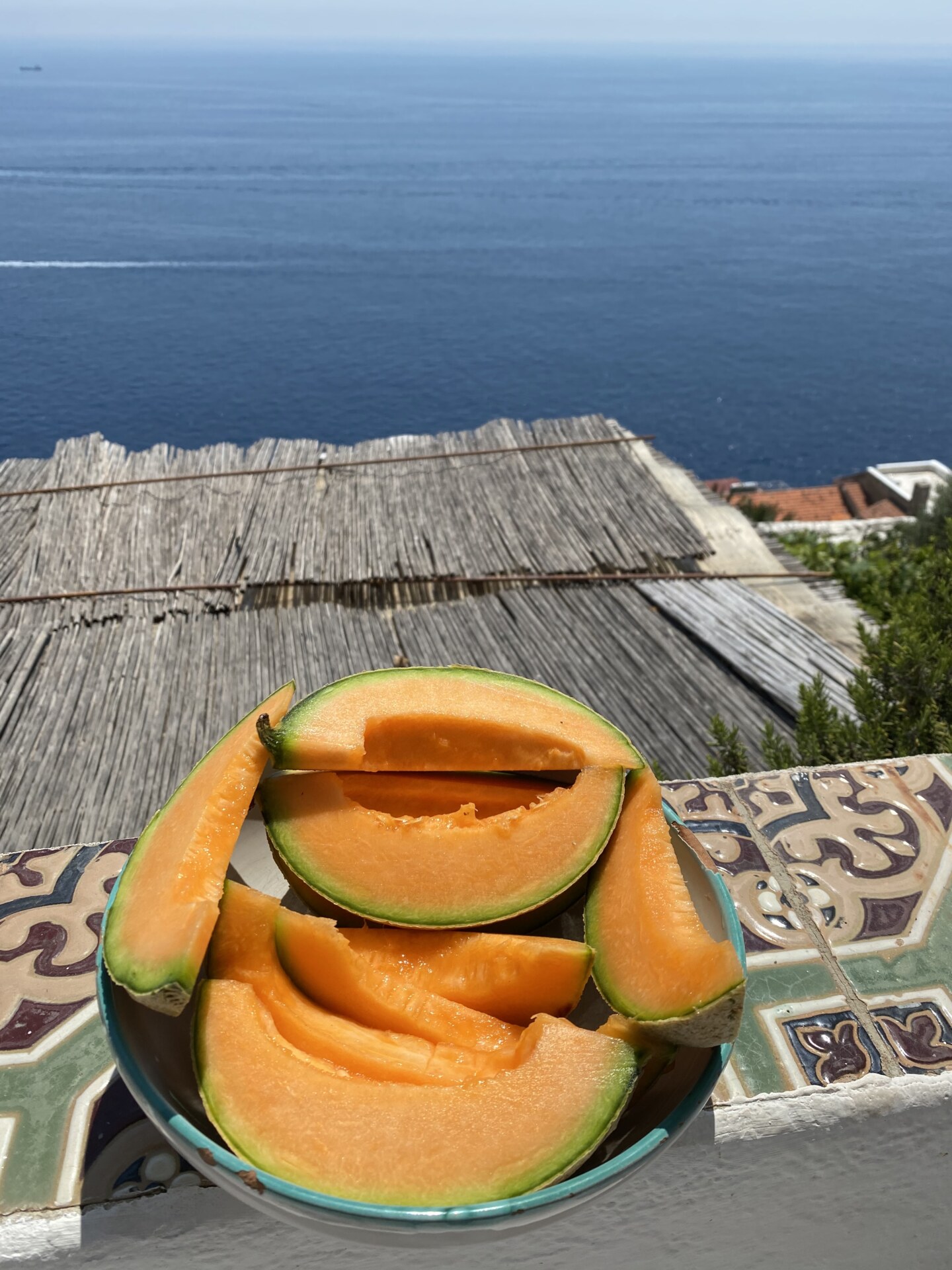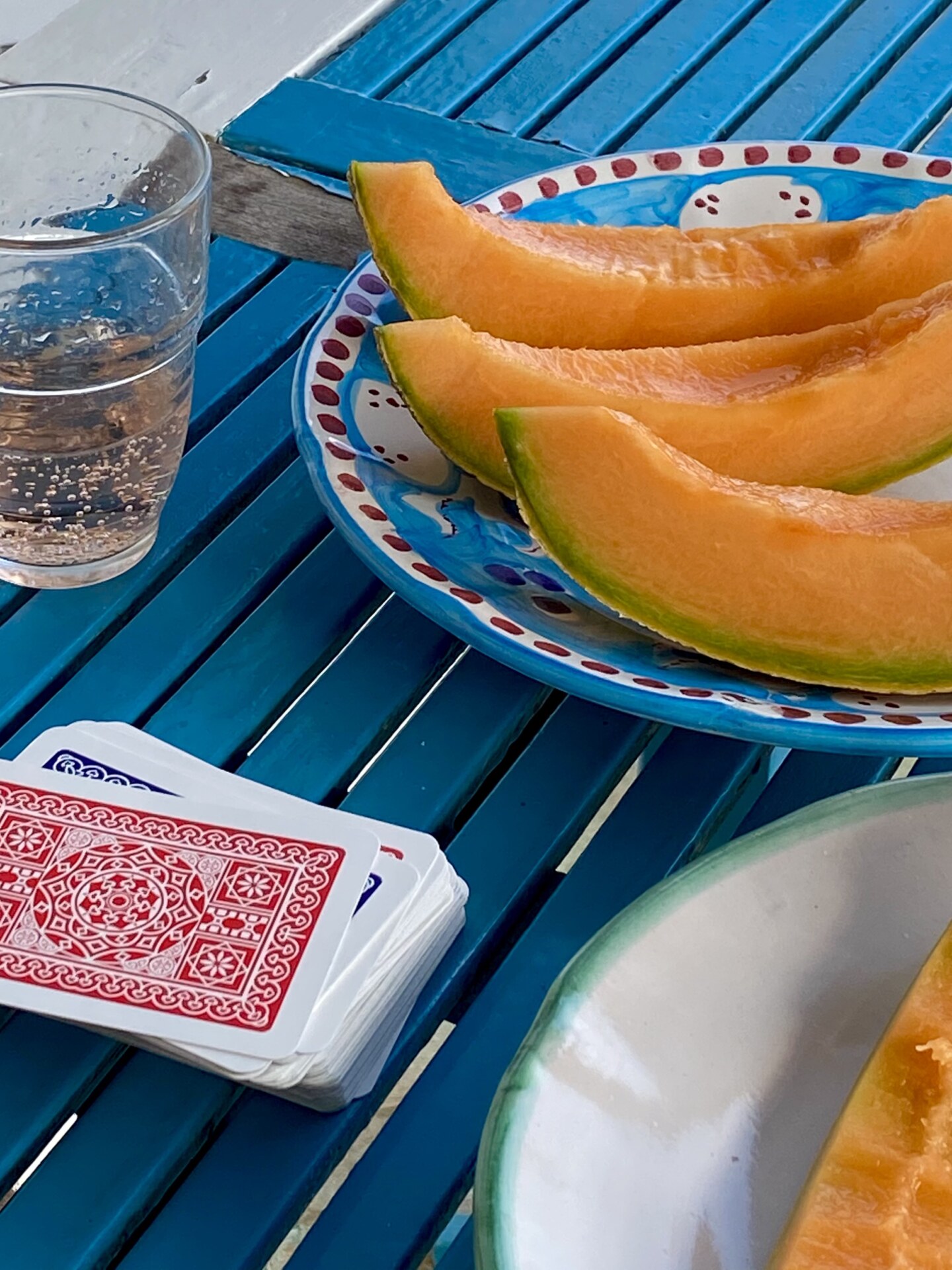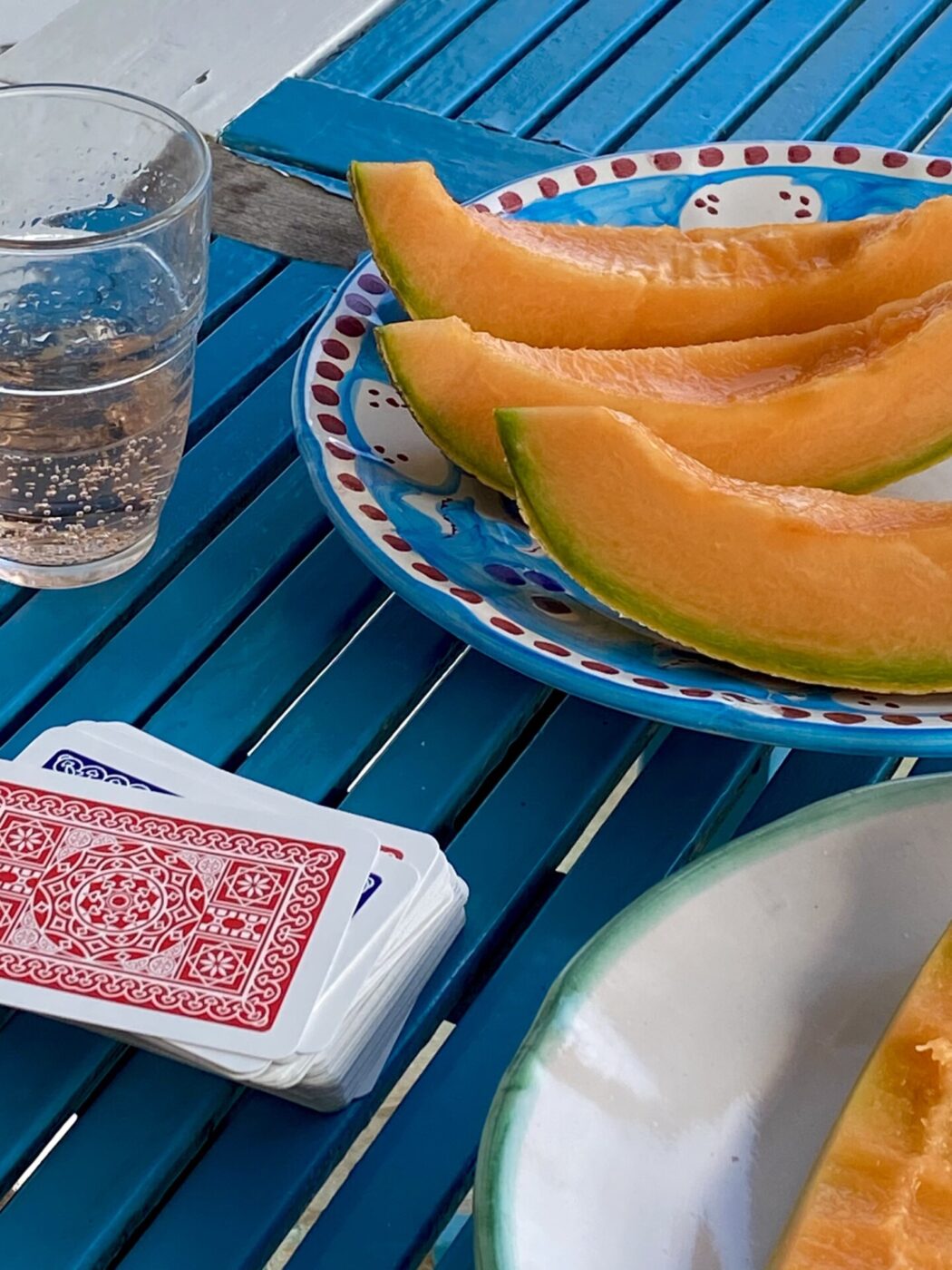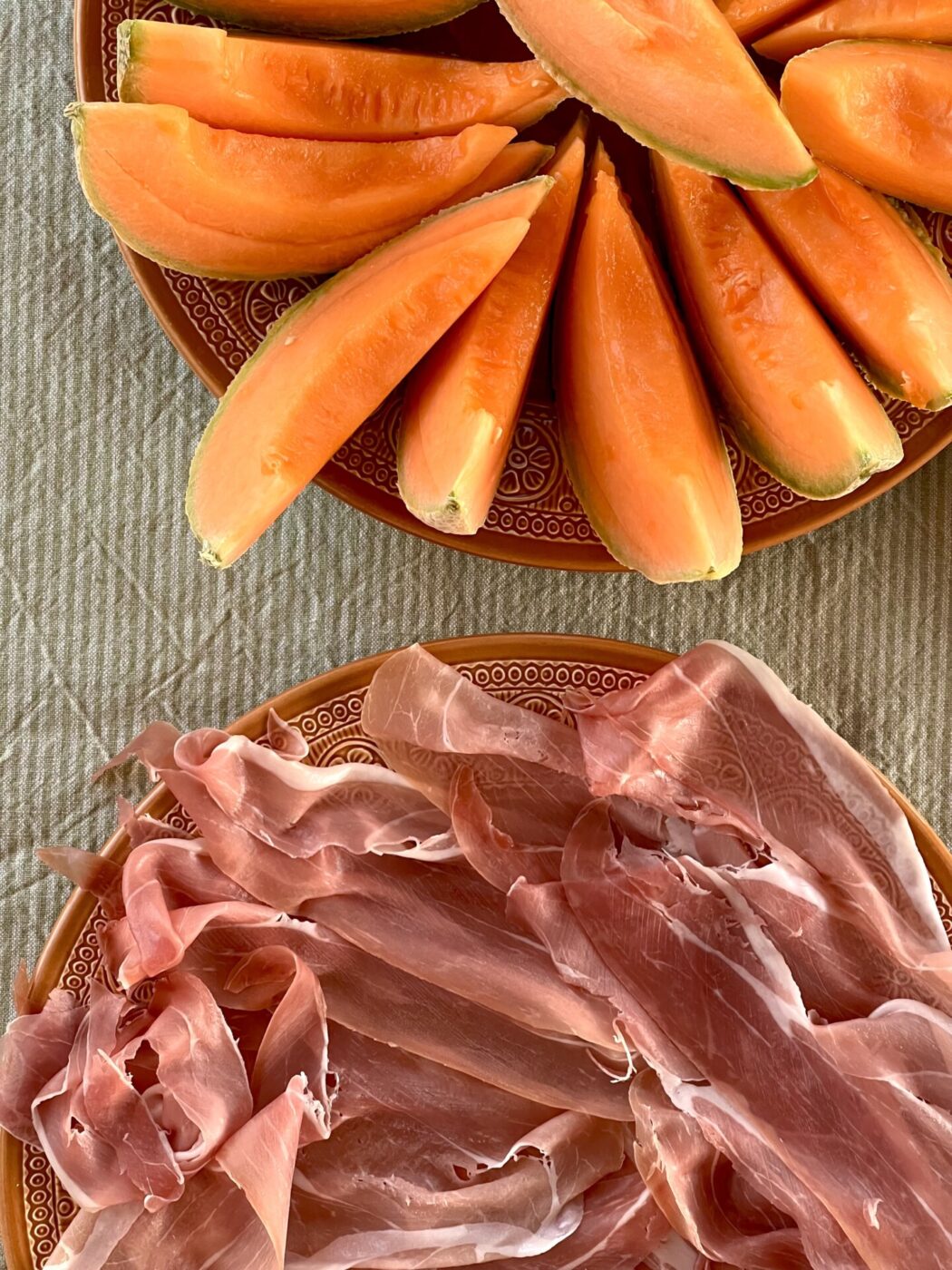My blood boils. The girl-from-Ohio-who-thinks-she’s-European-because-her-mom-is-French-even-though-she’s-never-lived-in-France has just dared to claim that prosciutto e melone is the grossest thing she’s ever heard of, leaving me no choice to step up to the plate and defend my favorite summertime antipasto and lunch.
To call a spade a spade, prosciutto e melone is just prosciutto and melon, a delectable sweet and salty match that starts to appear on menus when the season’s first melons are harvested, usually sometime in June. It may sound simple, but it’s one of those plates that proves a good pairing adds up to more than the sum of its two ingredients. Melons should be firm and juicy, cut into thick slices to be accompanied by paper-thin, almost transparent slices of prosciutto, whose fat should start to slightly melt under the sun’s rays. The whole thing is as tantalizingly dramatic as a Caravaggio still life.
Although there’s much to be said and debated about what constitutes an “Italian” dish, the first recorded pairing of prosciutto and melon can actually be traced back to this country. In the 2nd century, the Romans believed in the medicinal philosophy of Humorism, applied to food by renowned doctor Galen, who suggested that certain comestibles could play a role in bodily health (one of the first to understand so!), cure behavioral abnormalities, and restore equilibrium. “Cold” foods, he said, had to be balanced with “hot” foods, and “moist” ones with “dry” ones. The Romans believed in the practice as deeply as modern-day Italians do neck scarves and tepid beverages–hypochondriacs then and now–and Galen unwittingly became one of the first proponents of moderation and variety in diet. (We got some pretty great pairings from these beliefs too: cheese and pears, peaches and wine, etc.)
For much of the Middle Ages and the Renaissance, Galen’s diligent followers warned against consumption of the cold and wet melon. Their fear was justified, for on July 26th, 1471, Pope Paul II died in the night. The cause? Three “sadly substantial” melons, albeit “not very large”–fuel to the fire of the anti-cantaloupe contingent. It wasn’t until the mid-19th century that melon’s redemption story started–with prosciutto starring alongside it.
Bolognese edicts from this time banned the cultivation of dangerous melons during cholera outbreaks and recommended, for those daring enough to indulge in the fruit, to balance its qualities by pairing it with contrasting items–not cool but warm, not damp but dry. Doing so was a surefire way to boost the immune system. Cured meat was a shoe-in for the preparation, and records show that both mortadella and sausages made appearances. Over time, however, prosciutto emerged as the clear winner–for this, we can point to pure taste alone.

The first recorded recipe for prosciutto e melone, however, was published by Pellegrino Artusi (the man, the myth, the legend!) in his seminal 1891 cookbook La scienza in cucina e l’arte di mangiar bene. In one of his curated summer menus, he recommends “Popone [melon] with ham and generous wine because it fits the proverb: Quando sole est in leone, pone muliem in cantone, bibe vinum cum sifone.” (“When the sun is in Leo, put a woman in a canton, drink wine with a siphon.”) I can’t say I fully understand the saying, but Leo season, from July 22nd to August 23rd, is certainly a peak moment for prosciutto e melone. The preparation more or less disappeared for the following century, only to regain popularity in the melon-loving years of the 60s. (I’m glad Italians leant towards prosciutto e melone; my American contingent instead concocted a half melon filled with cottage cheese–blegh.) Ever since, the dish has been a star of the Italian summertime table.
It certainly can be found on mine come lunch, dinner, or merenda–and has been since I moved to Italy. My obsession with prosciutto e melone first developed from an infatuation with the namesake fruit, one that this country clearly knows how to grow well (despite any ancient edicts). What I knew of as “cantaloupe” in the US was most often found in fruit cups: lackluster mixes of under-ripe cantaloupe, under-ripe honeydew, and over-ripe grapes. Italy, on the other hand, grows a menagerie of varieties–from Emilia Romagna’s green Ramparine melon to the Tendral melon of Verona with its smooth, yellowish rind. Every melon I’ve picked up at my farmer’s market this year is fragrant, flavorful, sweet, and tender, and manages to douse my counter and floor in juice the second I cut it open. During the summer, I eat the stuff every chance I get: sliced or cubed, in granita or sorbet, alongside other fruit or, obviously, prosciutto. Perhaps Miss Ohio just never got to try the dish with ripe, in-season, Italian melon–and what a loss (for her) if she won’t give it a shot.
I will admit that I sometimes can’t wrap my head around paying 14 euros for the antipasto at a restaurant when you get just three slices of each ingredient. Making prosciutto e melone at home, on the other hand, is super affordable and requires the most basic of knife skills. Like all no-recipe recipes, prosciutto e melone is a no-cooking-required, two-ingredient, throw-together kind of meal.
So here’s the tldr: you’re wrong, random girl. Prosciutto e melone is not gross; in fact, it was designed to keep the gross at bay. And, at least here, they’ve been eating the dish with relish since long (long!) before you were born.
Prosciutto e Melone No-Recipe Recipe
Cut a cantaloupe (or other variety of melon if you’re feeling wild) in half from bottom to top, scoop out seeds with a spoon, and cut into long slices. Carve the rind off of each slice. Wrap each melon slice with one of prosciutto crudo–the highest quality you can find, best when paper-thin–or plop the two ingredients next to each other on a plate–you’re the artist here! Serve. (Make sure the prosciutto isn’t coming straight from the fridge: the fat should have a chance to warm slightly in order to bring out the flavor.)










